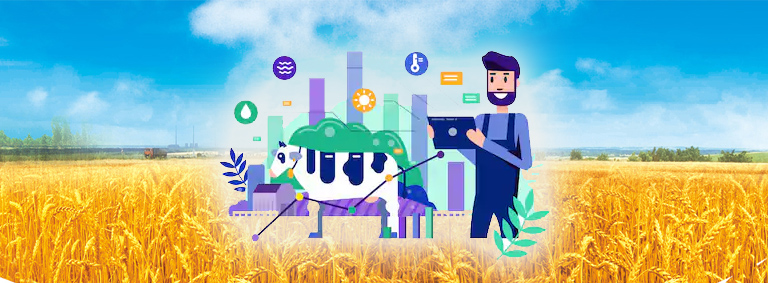The agritech innovation ecosystem is taking off with more than 500 active agritech start-ups in India, trying to disrupt the conventional agricultural value chain. This is unprecedented in the history of Indian agriculture with so many entrepreneurs mushrooming in a space of 3 to 5 years.
The solutions created by these innovative models has the ultimate objective of improving farm economics – which means more revenue, optimization of cost and access to low cost institutional credit for the farmers. Few of these models are direct to farmer as majority are direct to businesses who in turn work with farmers. Irrespective of the go-to-market business model, farmer is the key beneficiary of such innovations.
These innovations can be bucketed into following four types:
- Building market linkage for farmers by building demand-driven supply chains. Conventional supply chains have 5 to 8 intermediaries between the famer and consumer, the new-age models have 2 to 5. Market linkages helps farmer not only assured income but ability to borrow from institutional sources.
- Enabling access of high-quality inputs to farmers at the right time and at right price. These marketplaces are no vanilla marketplaces. This is prescriptive selling where the start-ups recommend nutrition, seeds and agrochemicals on the basis of soil/ crop and weather conditions.
- Integrating timely and accurate data into supply chain by capturing data from satellites, drones, mobile phones and spectrometers and running proprietary algorithms to get some real time insight which are valuable not only for the value chain players including food processing, agri output and input companies but also for the bankers and insurance companies. Access to data about farm, crop, soil and weather can go a long way to solve challenges around farmer financing.
- Last but not the least, innovative post-harvest solutions to reduce losses, improve food nutrition, traceability, fortification, development of alternative proteins are also picking up which help farmers as well as end consumers. It is important to make these innovations accessible to farmers particularly small and marginal ones, where there is a role of public ecosystem and policy interventions in enabling it.
Some of the possible interventions could be:
- Building an open source public digital platform called AgriStack tagging farmers to farms which can enable farmer access for governments, banks, insurance providers, input and output players. Agristack can have huge impact in digitizing the Indian agriculture and create multiple layers of innovations offering multiple solutions to farmers. Agristack can bring the agtech revolution much the same way which Indiastack brought to fintech companies.
- Focus on training and capacity building of rural entrepreneurs, who can be trusted partners and conduits for innovations to reach out to farmers.
- Building a catalytic pool of capital for rapid prototyping of these innovations which otherwise take much longer time.
- Building platforms which enables connecting start-ups with farmer groups, FPOs, corporates, research institutions and policy makers.
India has seen green and white revolution (Ag 1.0) in 70s and 80s and more recently in horticulture and animal protein sectors (Ag 2.0), which not only enabled food security but also helped millions of farmers come out of poverty. The next wave of revolution will be “digital agriculture (Ag 3.0)” which can bring humongous benefits to farmers and make agriculture sustainable.
We at FICCI are supporting and scaling such innovations, which can transform rural landscape and improve farm economics. Among many activities, we are working on connecting our corporate partners in agriculture sector with start-ups as well as building international corridors between Indian and foreign start-ups for possible collaborations.
(The author is Chairman, FICCI Task force on Agri Startups, and Venture Partner, Bharat Innovation Fund)






Sir
Farmers producers company par kya schim hi.